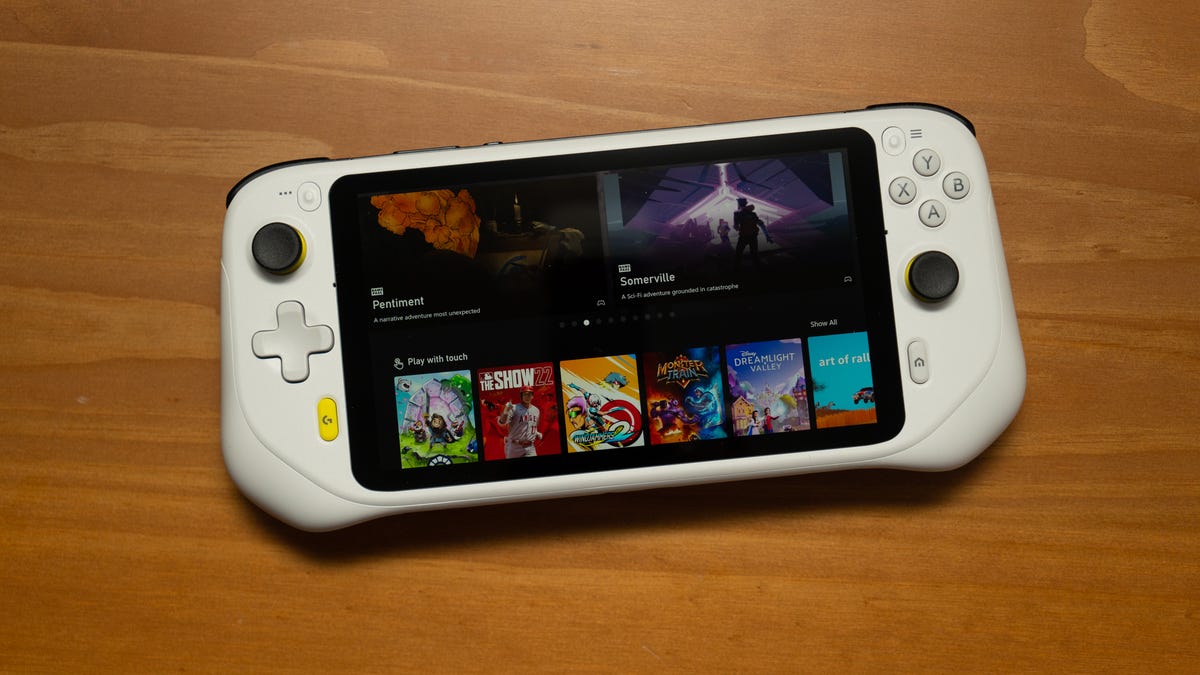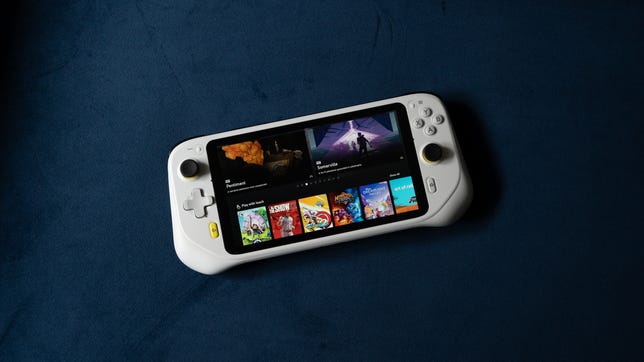 Why You Can Trust CNET
Why You Can Trust CNET Logitech G Cloud Review: Don't Call It a Cloud Gaming Mini Console
It's a small Android tablet with a controller. And unlike, say, a Switch, it's hard to forget that.

It's hard to get excited about the Logitech G Cloud, but it's hard to hate it as well. Fundamentally, it's a small Android tablet with a nonremovable controller and a custom launcher; you can also run it as a generic tablet. In contrast, a device like the upcoming Razer Edge is a similar, small Android tablet plus Xbox-layout controller, but bundled rather than attached. It doesn't feel cheap, but it doesn't feel premium, and ultimately, it doesn't feel like something that inspires you to play games.
The closest design to the G Cloud is the Nintendo Switch Lite, in that it's an all-in-one device with standard controllers attached on either side of a screen and is most suitable for fundamentally mobile gamers. The Steam Deck runs along the same lines, but at least at the moment it's for PC gamers who want to play on a smaller, more mobile device. Its dimensions lie somewhere between the two.
I've got mixed feelings about the G Cloud's execution. Attaching any type of controller to a phone is still a bit of a hassle, and even big-screen phones feel a little small because they're long and narrow rather than 16:9. But at its price it competes with the Switch for your money, even though they're very different devices. And it's specced for least-common-denominator cloud gaming, not something like GeForce Now's RTX 3080 high-refresh-rate 1440p. Plus, we've gotten used to OLED screens on many devices. Nor is there a charging dock.

Logitech G Cloud
Like
- Less awkward than swapping controllers on your phone
- Micro SD slot for adding storage
Don't like
- Relatively expensive
- Not much storage
- Screen isn't very high contrast
- Slow
- No camera
The custom launcher sort of looks like a console dashboard, but basically just shows most recent apps -- such as Xbox Cloud Gaming, but not the specific game you played -- and lets you pin apps to the main screen
The screen's pretty basic: a 1080p, 7-inch IPS display with a 60Hz refresh rate and 450 nits of brightness. It runs on a Qualcomm Snapdragon 720G with 4GB of memory, has stereo speakers with an amp, a stereo noise-canceling mic and both 3.5mm and USB-C audio output (no video), as well as Bluetooth 5.1.
The controller aspects feel... fine, or at least typical for a mobile controller. In other words, the buttons are a little mushy, the triggers have less travel (but still more than you'd consider quick response), the grips are textured plastic (less slippery than normal plastic but less grippy than rubberized), the sticks really only understand four directions (i.e., they don't register diagonals very well) and so on.
You can connect via Wi-Fi 5 only -- there's no Wi-Fi 6/6E or cell support, which is disappointing, especially since I frequently ran into network issues. In my signal-dense apartment building, Wi-Fi 6E has gone a long way to improve the speed and reliability of my connections, which would have made a big difference here.
The controller grips have a little more curvature than a lot of similar mobile game controllers.
The G Cloud's bandwidth measured at least half that of my phones, tablets and computers, and I ran into issues ranging from display artifacts to freezing with Xbox Cloud Gaming, GeForce Now and Steam Link, even in relatively undemanding games like Pentiment, Shadows Over Loathing and Dead Cells. Playing local Android games went relatively smoothly, though.
Built-in storage is only 64GB, but it does have a slot for a microSD/TF card. It also professes to have "linear haptics" for the controls, but that didn't seem to translate into anything perceptible. The company rates the battery for up to 12.5 hours of play time, but in practice it was more like 7 or 8. You could probably stretch it out by leaving the ambient light sensor enabled, which dynamically brightens or dims the screen, but I find those never, ever work well. In this case, it would lower the brightness to 0 in a dark room -- and I'm almost always in the dark -- which was far too dim.
I wasn't ever able to forget that it was basically a retrofitted tablet, from its initial oh-my-god-get-out-of-my-way-Google setup (which at least allows you to postpone some of the basics in order to get to gaming sooner) to its why-can't-I-uninstall-Gmail-or-any-other-Google-app annoyances. Plus, it's only like a console in the frustrating ways, like single-tasking; it can only load one app (or game) at a time, so you can't interrupt your game to check your email without shutting it down.
That's all fine if you want something that can double as an Android tablet, but I have a phone with a better display, faster processor and 5G support, and that's not another large device to throw into my bag. It would be fine if it were cheaper -- say, under $200 -- or if it came with a year's subscription to at least one of the services. As it is, it's just unexciting at best and disappointing at worst.

